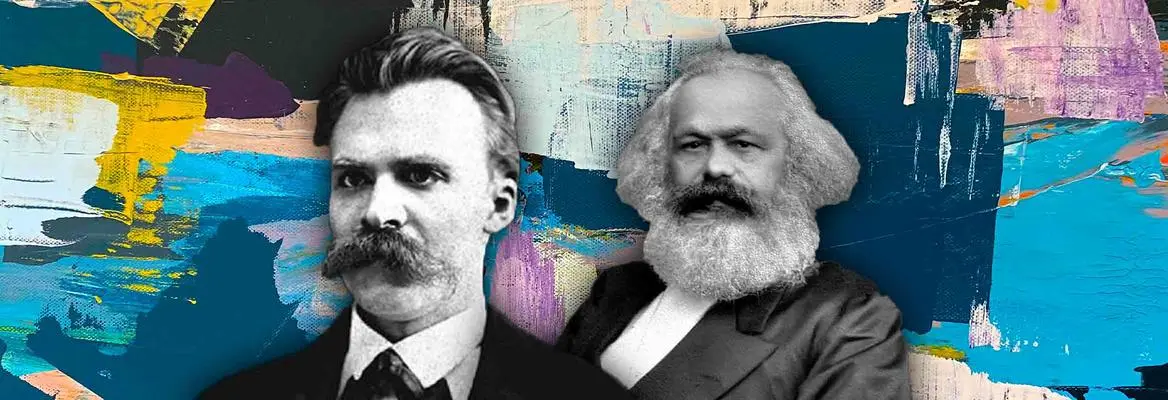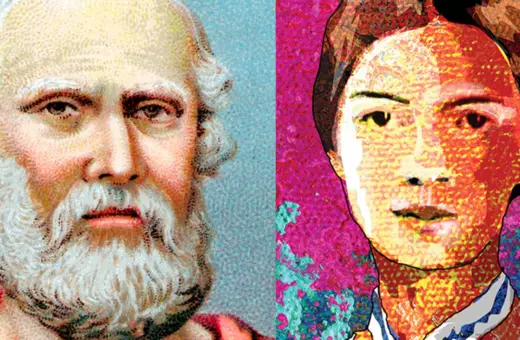The similarities between the thought of Marx and Nietzsche might not at first be obvious. However, each saw art, and in particular, an artistic attitude, as crucial to a well lived life. Each thinker criticizes modernity in differing ways; Nietzsche, through philosophy and psychology, Marx, through economics. Yet, these infamous, historical heavyweights, share a utopian vision – be it psychological or societal – that very much centers around the affirmation of life through art, writes Jonas Čeika.
In the foreword to his first book, Friedrich Nietzsche called art “the highest task and the true metaphysical activity of this life”, [1] a claim which set the tone for his entire philosophical career. But the ambitiousness of this view of art was by no means out of place in the German philosophy of Nietzsche’s time, and Karl Marx, a thinker whose name is rarely associated with aesthetics, in fact shared this ambition. Both philosophers found aesthetic activity inseparable from a genuine human existence.
Towards the end of the 18th century, German philosophy was undergoing a revolution. Kant’s philosophy had demolished the conventions of “dogmatic” philosophy, and undermined many of the assumptions held by established theology. While many were optimistic, seeing this as philosophy’s awakening from its “dogmatic slumber”, others feared that the decline of theology would strip life of its meaning and justification. It was in this context that the term “nihilism” was first popularized, as the philosopher Friedrich Jacobi accused Kant’s philosophy of being nihilistic insofar as it undermines faith. Others were sympathetic to Kant, but worried about the seemingly unbridgeable split at the heart of his thought: the split between theoretical philosophy (which saw human beings as natural objects, determined by the necessary laws of physics) and practical philosophy (which saw human beings as subjects, capable of freedom and moral choice). How could these two seemingly incompatible aspects of existence be reconciled?
The aesthetic philosophers of this period stand out in how ambitious their views on art are, and, given the magnitude of the problems they were facing, it is understandable why: art for them was to fill the void left there by the death of God.
It was in response to the above problems that a long line of German thinkers came to seek solutions not in theology, nor epistemology or natural science, but aesthetics, and the two most influential philosophers of 19th-century Germany, Karl Marx and Friedrich Nietzsche, must be understood as inhabiting this context. The aesthetic philosophers of this period stand out in how ambitious their views on art are, and, given the magnitude of the problems they were facing, it is understandable why: art for them was to fill the void left there by the death of God.
Before delving into philosophy, both Marx and Nietzsche initially wanted to be artists. Nietzsche’s main passion was music, and he wrote compositions from his teenage years all the way to the last decade of his sane life, while Marx wanted to be a romantic poet – some of his earliest available writings are of poetry, and as a young student, he wrote three books of poetry to his wife Jenny. Although they came to find their lasting mark elsewhere, art never ceased having immense importance to them, not only as a hobby and interest in their personal lives, but as an aspect of their philosophical writings too.
Nietzsche famously proclaimed that “only as an aesthetic phenomenon is existence and the world eternally justified.”





















Join the conversation